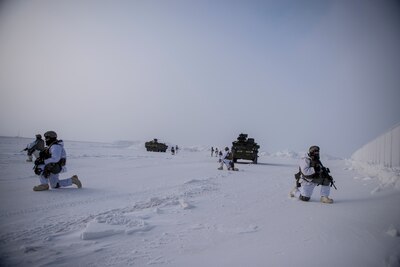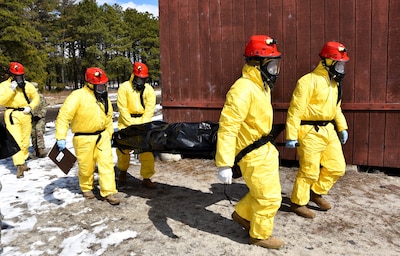By Navy Petty Officer 1st Class Kiona Miller, Alaskan
Command
FAIRBANKS, Alaska, March 16, 2018 — The U.S. military
conducts mission-based training events year-round, but Arctic Edge 2018 is a
unique opportunity that has brought more than 1,500 U.S. military personnel
from 20-plus units together to train in arctic conditions throughout the Alaska
range.
For Special Operations Command North, a component of U.S.
Special Operations Command with headquarters at Peterson Air Force Base,
Colorado, it is an ideal environment to test their ability to operate in
extreme weather conditions.
“It’s a chance for us to get up here in these extreme
conditions and conduct training to make sure the equipment is working, and we
are keeping those skill sets sharp,” said the director of operations for Joint
Special Operations Task Force Alaska.
Names, ranks and service affiliations of special operations
service members involved with the exercise are not included in this story for
operational security and privacy reasons.
Conducting long-range movements in severe weather over
treacherous terrain with limited visibility is challenging for even the most
experienced operator. The teams have endured sub-zero temperatures and near
whiteout conditions since the first team deployed March 7.
During the evolution, one advanced operating base team and
two operational detachment alpha teams -- which consist of both mobility- and
mountain-trained personnel -- were deployed to Alaska’s Utqiagvik and Anaktuvuk
Pass. So far, the teams have completed long-range ground and air infiltration
events, which included an airdrop of equipment as well as reconnaissance and
direct-action operations. The teams also used new communication systems to
enhance their capabilities in a cold-weather environment.
Biggest Obstacle
The company operations officer said the biggest obstacle the
teams have overcome is identifying and, in some cases, developing new equipment
needed for operations in such austere environments.
“We have guys in Anaktuvuk and we have guys in Barrow, two
completely different terrains, and it requires two different load-outs,” he said.
“So, [we’re] finding the solutions for equipment and getting people to
understand that there is no one-size-fits-all [packing list].”
With the diverse terrains and cold weather, the company
operations officer said, training events like Arctic Edge allow the teams to
maintain perishable skills.
“It’s cold in Colorado,” the operations officer said, “but
we don’t deal with the temperatures that they deal with up here. So the ability
to come up here and train in Alaska is phenomenal.”









